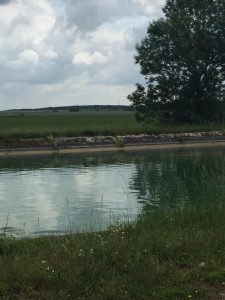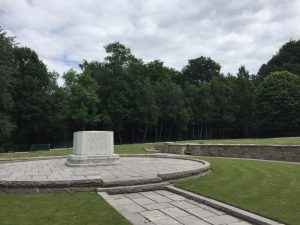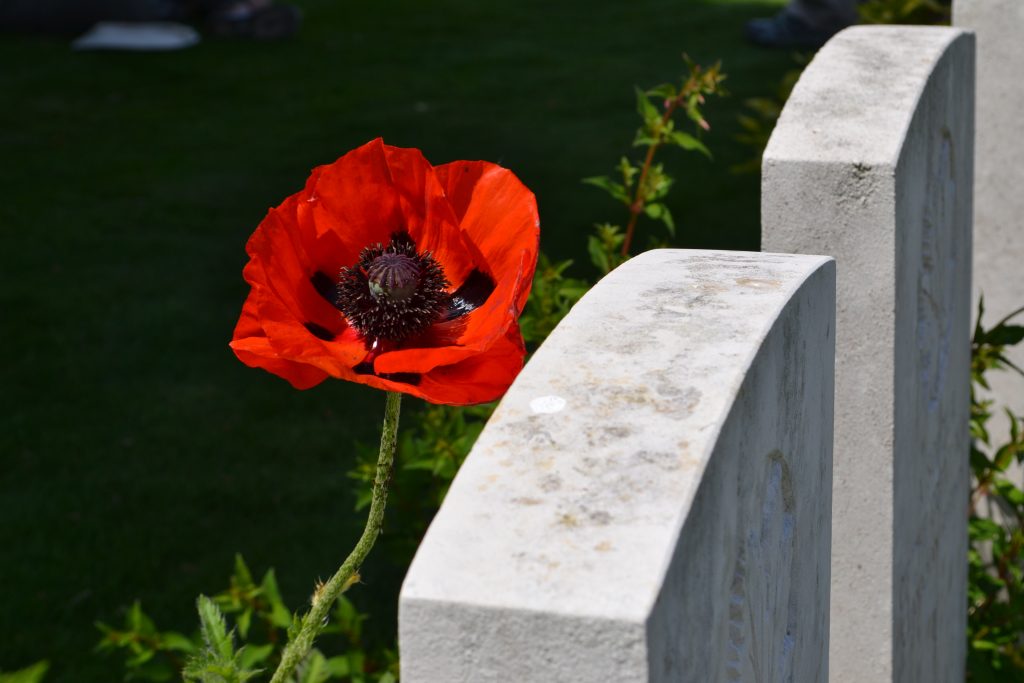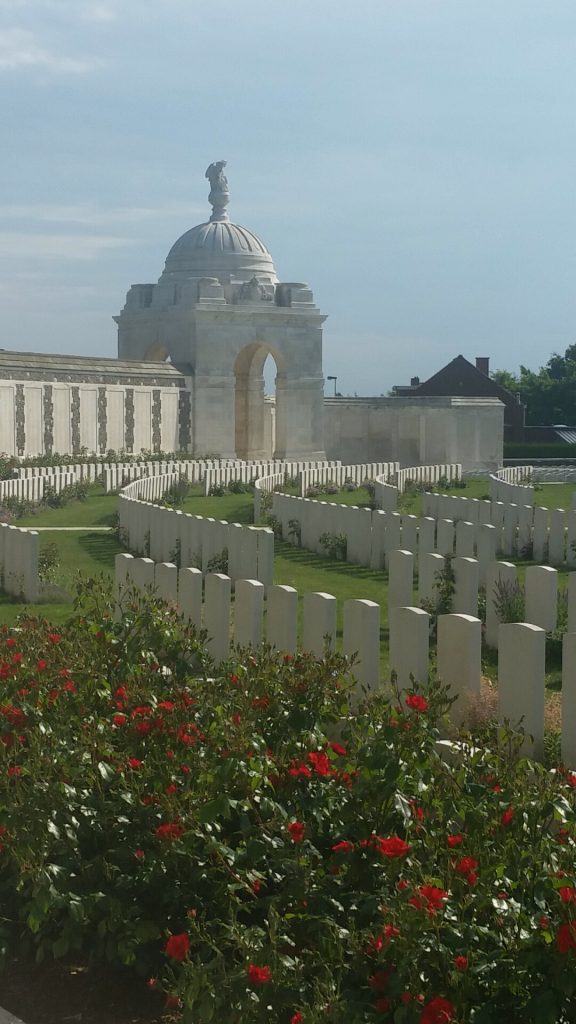We began our day by visiting the Irish War Cemetery in Guillemot. It saddens me to look upon their graves and ponder about lives of the men who lay before me. Did they have a wife or girlfriend; children or siblings; someone to remember them once they died? It’s hard to know for sure, but I like to think that someone came by this cemetery and wept for the dead.
On this tour, we have visited 2 to 3 cemeteries a day. Sometimes they blur together, and other times they distinctly stand out. Regardless of their nationality, French, British, Irish, Canadian, German, or Austrian, they fought and died for a set of ideals. My real concern is, who comes to visit these men after 100 years? I can’t stress it enough how much this battlefield tour means to me. We are not just studying the First and Second World Wars, but we are physically experiencing the sacrifice these men made. Who they were, where they were born, and what they believe matters little. For me, I am proud to say that I can at least offer these men some comfort in death. It’s a rather morbid though, but other than tourists passing by, who takes the time to stand at a grave just sitting there in silence.
By taking a little bit of time out of this tour, I can say that these men will be remembered. They gave the ultimate sacrifice for their country. If I can make a small contribution to make sure these men are never forgotten by sitting beside their graves crying, reading, or thinking, then I will happily.
By visiting the cemeteries and the battlefields, I think us as a tour group can grasp the sacrifice these men made. I can’t even imagine Canadian soldiers from the Second World War running up the beaches at Dieppe and being shot at with machine guns. Both sides were doing their job, and protecting an ideal that they believed in. That last statement can definitely be contested, but the fact remains, that these men regardless of their nationality, gave up their lives in service of their country.




